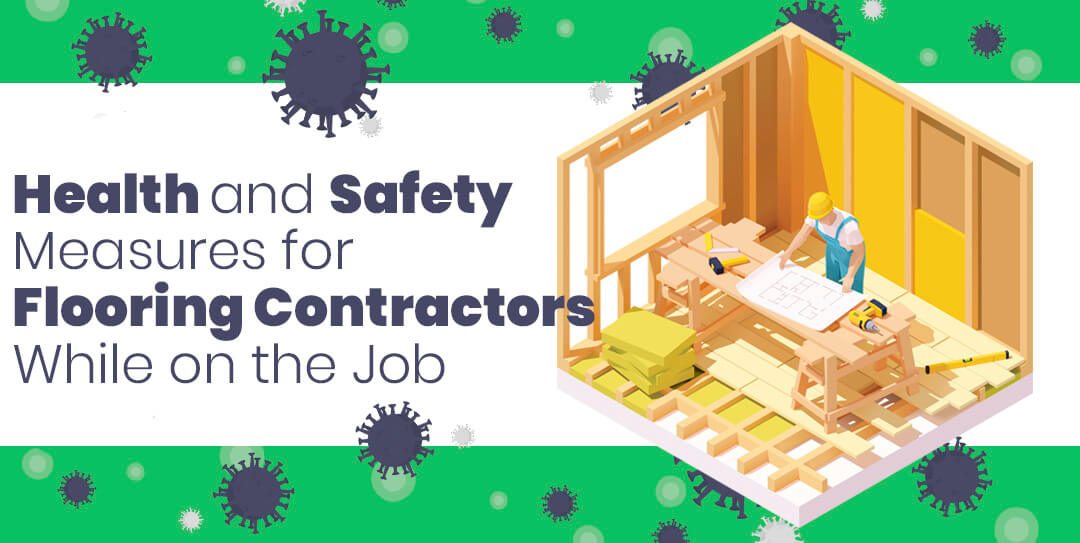Over the past eight months, COVID-19 has massively impacted retail and public establishments. Small businesses are closing one after the other, and that’s no surprise. The global coronavirus recession began on 20 February 2020, and it came as an economic consequence of the ongoing pandemic.
The flooring sector has also been affected by the pandemic, but contractors are slowly adapting to the changes. As a flooring contractor, if you want to stay in business, you need to do the same.
We gathered all the information you need in one article, so you don’t have to do all the research. Here you will learn everything you need to know and follow to keep your flooring business up and running during and after the pandemic.
Measures to Prevent the Spread of Coronavirus
#1 Best Practices
We should always remind ourselves and our employees of the most important coronavirus prevention measures:
- Daily handwashing, especially before and after work
- Social distancing of at least 6ft from other people
- Wear certified masks that protect from COVID-19
- Make sure to always cover your face when you sneeze or cough
- Clean and disinfect any touch surfaces (sanitizers should contain at least 60% alcohol)
- Daily health check
#2 Basic Flooring Practices You Must Follow:
To protect the health of your customers and employees, you must follow these six safety measures.
- Virtual Estimates – You can ask your clients to send you videos of their homes for you to give a quote.
- No-Contact Project Assessment – Ask your clients to give dimensions of the area you will be working on, for you to know how much materials you need.
- Additional Protection – Buy personal protective equipment (PPE) for your employees to keep them safe during work.
- COVID-19 Cleanup – Before starting work, make sure you disinfect the area you will be working on. This is important not only to protect your team, but it also makes a good impression on your clients and makes them feel safe.
- Post-work Cleanup – After finishing the flooring job, make sure to disinfect everything you have touched, including door handles, handrails, etc..
#3 Safety and Control Procedures for Flooring Contractors During COVID-19
To ensure your clients feel comfortable when choosing your services, you must show them that:
- You follow the CDC Guidelines
- Your employees’ health is screened daily
- Your employees are fully-equipped with PPE
- Your employees are fully aware of the situation and are following all the best practices for virus transmission prevention
#4 Additional Control
Protect your clients by advising them to:
- Wait in another room while your flooring experts are doing their jobs, and until they have disinfected the worksite.
- Handle paperwork online, since it would limit face-to-face communication, making it harder for the virus to spread. Or leave the documents somewhere where the client has requested.
- All communication should be done via online communication platforms to reduce face-to-face contact. Skype, Viber, WhatsApp, and Facetime are all great platforms for this purpose.
Protect your employees by advising them to:
- Clean their tools, equipment, machinery, and surfaces they touch daily before and after using them. This is to make sure there are no traces of the virus during work hours.
- Be aware of the people they come in contact with. That includes, co-workers, customers, and suppliers.
- Stay at home if they are not feeling well or are showing possible COVID-19 symptoms.
Update Your Business Information Online
For your clients to feel comfortable and for them to choose you above all the competition, you should take action and inform them that your company is following the latest CDC guidelines.
Start from:
- Updating your website with a COVID-19 response page
- Posting the measures you have taken on your social media accounts
Additional COVID-19 Resources
During the pandemic, customers are likely to pick a company that has responded quickly to the COVID-19 situation to ensure their clients’ safety.
If you want to learn up-to-date and in-depth information about the virus, visit the World Health Organization website.
You can also take a look at the frequently asked questions and answers regarding COVID-19 on the World Health Organization website.



